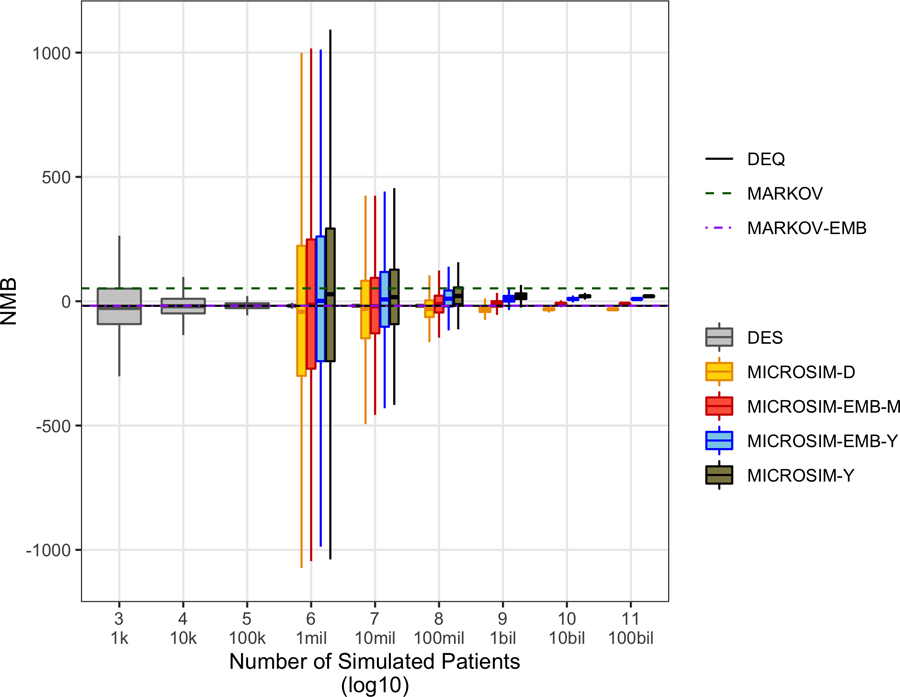Figure 1.

Convergence of net monetary benefit outcome for stochastic models to deterministic model outputs. Embedded microsimulation with monthly and daily time cycles not simulated due to computational constraints (i.e., for some simulated patient sizes, model runtimes of > 1 year in high-performance computing environment). DEQ, differential equations model; DES, discrete event simulation; MARKOV, discrete-time (1-year cycle) Markov model with rate-to-probability adjustment based on P(t) = 1 – e−rt, where r is the rate and t is the time step; MARKOV-EMB, embedded discrete-time (1-year cycle) Markov model with probability matrix based on P(t) = etG, where t is the time step and G is a transition intensity matrix; MICROSIM-[D/M/Y], discrete-time (daily/monthly/yearly time cycle) microsimulation model with rate-to-probability adjustment based on P(t) = 1 – e−rt, where r is the rate and t is the time step; MICROSIM-EMB-[M/Y), embedded discrete-time [monthly/yearly time cycle) microsimulation model with probability matrix based on P(t) = etG, where t is the time step and G is a transition intensity matrix; NMB, net monetary benefit (willingness to pay $100,000 per quality-adjusted life year).
